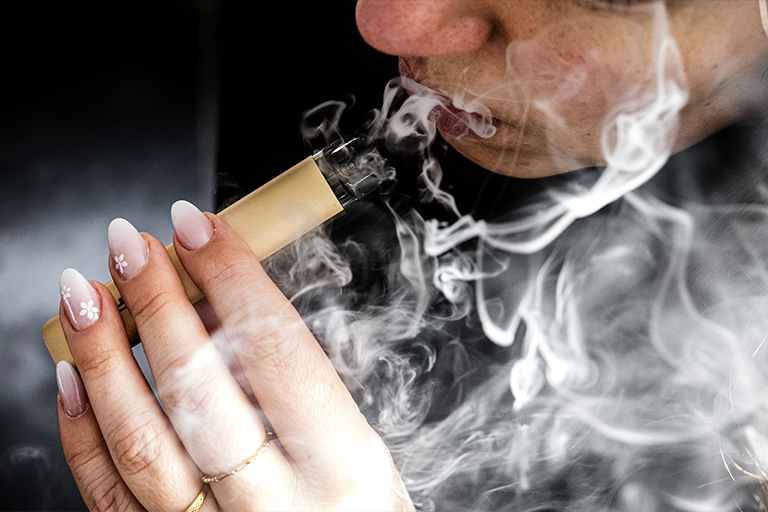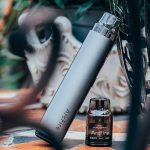Guide
How Many Puffs Does a Disposable Vape Have?
If you’re new to disposable vapes or even a regular cloud chaser, chances are you’ve asked yourself: “How many puffs does this thing actually last?” The short answer? It depends. But don’t worry, we’re breaking it all down – from what affects puff count, which vapes last the longest, and how puff numbers relate to battery and e-liquid.

How Many Puffs Does a Disposable Vape Have?
Most disposable vapes range from 600 to 20,000 puffs depending on the model. Puff count is influenced by e-liquid capacity, battery size, and how often you vape. Popular devices like the HQD Cuvie Slick 20000 can last over a month with moderate use.
Related articles:
- How Many Puffs Per Day Is Normal When Using a Disposable Vape?
- How Long Do Disposable Vapes Last? A Complete and Detailed Guide
- How to Know When Your Disposable Vape Is Almost Empty
Why Do Puff Counts Vary Between Disposable Vapes?
Not all vapes are built the same – and that’s not a bad thing. The number of puffs in a disposable vape can range anywhere from 600 puffs to over 20,000 puffs depending on a few key factors:
1. User Needs
Some vapers just want a quick nic fix. Others want a device that lasts weeks. Puff counts vary to suit every type of user, from the occasional social vaper to heavy daily puffers.
2. Market Demand
In Australia, the market has shifted towards high-capacity, rechargeable disposables due to stricter import rules and the desire for better value. That’s why we’re now seeing more 10,000+ puff devices than ever before.
Most Common Puff Counts in 2025
Here’s a breakdown of the most popular puff counts currently available, and how long they might last with moderate use (roughly 300-400 puffs per day):
| Vape Model | Puff Count | Estimated Use Time | Rechargeable? |
|---|---|---|---|
| IGET Bar 3500 | 3,500 | 8–10 days | No |
| RELX MagicGo 8000 | 8,000 | 2–3 weeks | Yes |
| BIMO Ultra 7500 | 7,500 | 2 weeks | Yes |
| HQD Cuvie Slick 20000 | 20,000 | Over a month | Yes |
| ALIBARBAR INGOT 20000 | 20,000 | Over a month | Yes |
These devices are all available at VAPE WAREHOUSE, so you can compare based on puff count, flavour, and design.
Puffs vs Battery vs E-Liquid: What Runs Out First?
Let’s clear this up once and for all. Disposable vapes consist of three key parts:
- E-liquid (nicotine juice)
- Battery
- Coil (heating element)
Here’s how they affect puff count:
1. E-Liquid Usually Goes First
Once the juice is gone, your vape is done – regardless of how much battery is left. You’ll start getting dry hits or a burnt taste.
2. Battery (on non-rechargeable vapes)
On older or smaller disposables, sometimes the battery dies before the e-liquid is used up. This means wasted puffs. Rechargeable vapes solve this problem completely.
3. Coil Burn
In rare cases (usually with chain-vaping), the coil can burn out before either the e-liquid or battery. That’s why taking smooth, spaced-out puffs is always recommended.
Related Questions About Puff Count
1. Does puff count mean exact number of inhales?
Not really. A “puff” is typically measured as a 1.5-2 second inhale. Longer or harder pulls will reduce total puff count.
2. Can you refill a disposable vape to get more puffs?
Nope. Disposables are sealed and not designed to be refilled. Attempting to do so can cause leaks or device failure.
3. Why is my disposable vape not lasting as long as it should?
Could be battery drain, chain vaping, or even fake devices. Make sure you’re buying from an authorised dealer like VAPE WAREHOUSE.
4. Can puff count help me choose the right vape?
Absolutely. If you’re vaping daily, go for something above 8000 puffs. For weekend use or beginners, 3000-6000 puffs is a solid range.
Puff Count Isn’t Everything – But It Matters
The number of puffs your vape delivers is a good indicator of how long it’ll last, but don’t base your whole decision on just numbers. Think about flavour quality, rechargeability, battery size, and your own usage habits.
If you’re still unsure, check out our full range at VAPE WAREHOUSE Australia – where we stock only 100% authentic, high-performance disposable vapes from top brands like IGET, BIMO, RELX, and more.





